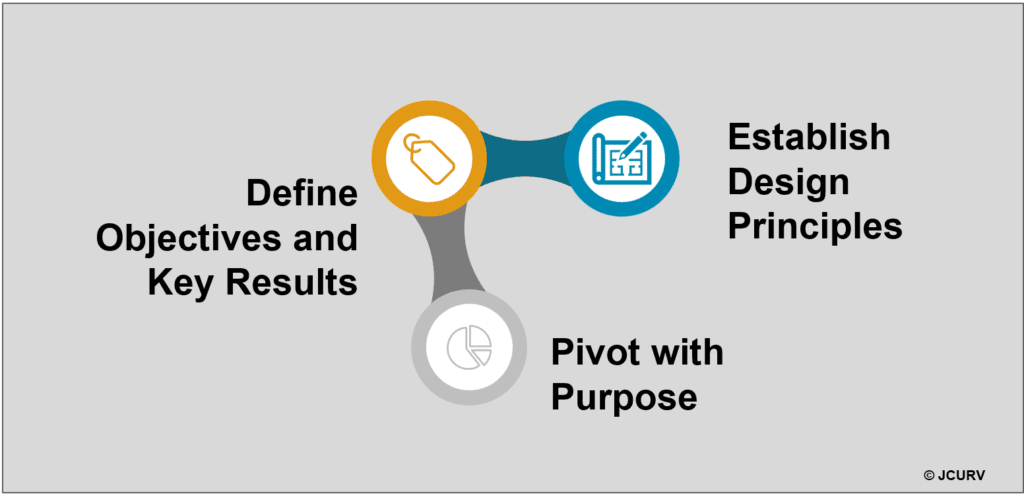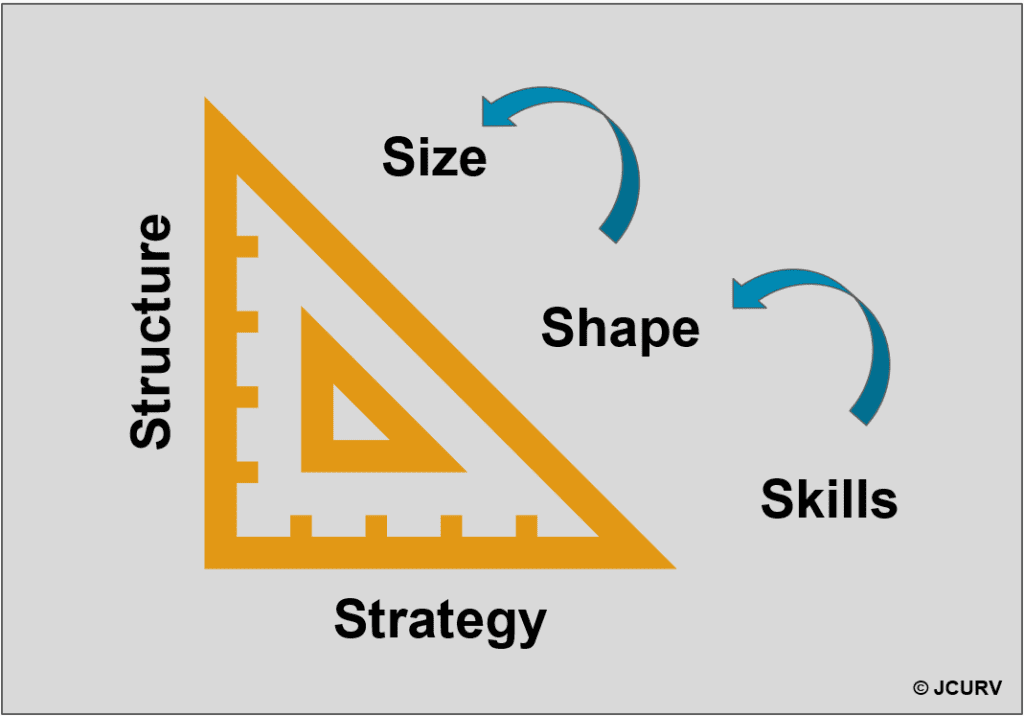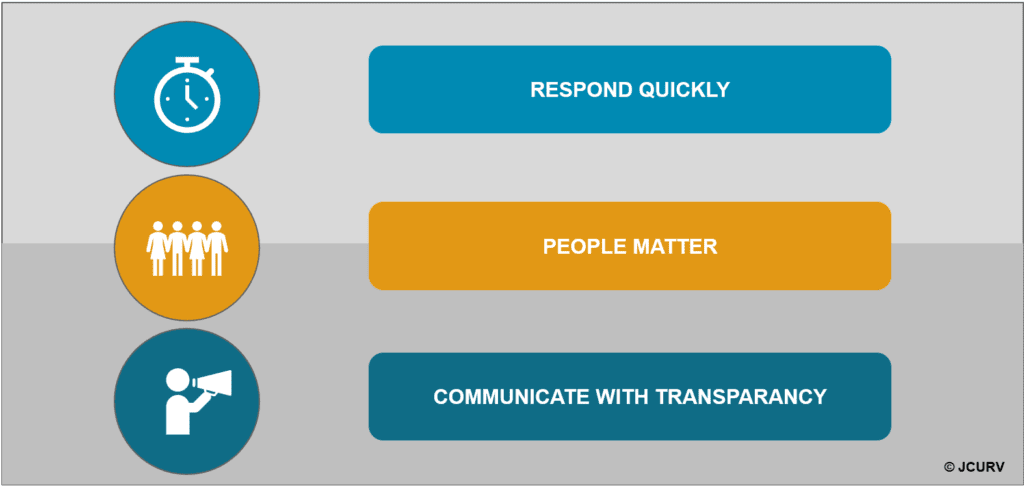Five Must Do’s For Your Organisation Design
Conditioning your organisation to learn, adapt, and evolve
In today’s rapidly changing business landscape, the need for organisations to adapt and evolve has never been more pressing. Redesigning the structure of an organisation is a multifaceted endeavour that requires careful consideration of various critical elements. From redefining roles and responsibilities to restructuring communication channels, each aspect plays a pivotal role in shaping your organisation’s effectiveness and agility. The key question is, where do you begin training for a transformational endurance race when your organisation has not yet defined the course, race goal, or training plan?
When setting out to run a marathon, month over month you train with a goal in mind for the big day. Riding the endorphin high in the race around mile 19 or 20 you will manage to break through “the wall” and carry yourself across the finish line at 26.2. Whilst probably the last thing on your mind, the best thing you can next do for yourself (aside from stretching) is to sign up for the next race. Why? This will force yourself to maintain your newly achieved level of fitness and not let all the hard work go to waste as you retreat to your sofa and gloriously feed your post-run calorie deficit.
Similarly with large scale restructures, we often find ourselves stumbling across our own professional finish lines with transformation fatigue never wanting to look at another org chart again. In this scenario time will go by and the heavily invested in yet equally unattended organisational shape will deflate losing all resemblance of being in race ready.
This article explores the key factors organisations must address when undertaking the complex task of redesigning their structure to thrive in the modern and increasingly uncertain world and avoid the bi-annual transformative overhaul we face after neglecting our structural health.

1 – Define clear objectives and stick to them!
Clear objectives serve as the compass guiding any successful organisation design programmes and large-scale transformations. From aligning stakeholders to providing a roadmap for action, understanding the importance of setting clear objectives is essential for achieving meaningful and sustainable transformational outcomes.
Equally important is your discipline to maintain and continuously revisit your transformational objectives throughout the redesign journey. This will enable you to avoid arriving at the wrong finish line of a race you hadn’t realised you were ever running. Whether improving efficiency, increasing innovation, reducing costs, or adapting market changes, having a clear understanding of your goals will guide your decisions and measure success.
Key considerations:
- Define objectives and key results – OKRs are one of the most misunderstood buzzwords as of late with many organisations copy/pasting metrics and rebadging them as a comprehensive set of OKRs. Give these some thought around the true organisational objectives you’re looking to achieve with an OD transformation and then apply the key results / metrics you’ll measure them by.
- Establish Design principles – DPs are the salt of organisation design, an amazing ingredient to kick the standard recipe up a notch, but if overused can severely ruin the result. Consider leveraging the right balance of principles to stick by remaining punchy and measurable but not burdensome or overly restrictive.
- Pivot with purpose – Occasionally the goal posts will change based on market conditions, changes in leadership, or other impeding factors. Whilst most transformations tend to race to the restructuring finish line it’s important to recognise that each line you cross will unlock new opportunities for further iteration. Schedule time to regularly review your design to ensure it aligns to the potentially evolving organisational strategy.

2 – Align your structure with strategy
A key foundation to every successful re-design is to ensure the final structure has a measurable correlation with the overarching business strategy and organisational goals. For example, if your organisation is aiming to shift into driving a design to foster innovation incorporate a decentralised structure to encourage creativity and autonomy. In contrast, if the aim is to standardise and scale think about adapting a tight-nit job architecture.
Key considerations:
- Size – Size of an organisation is crucial in designing its structure because it directly impacts efficiency and communication. A structure that works well for a small company might be inefficient and overly bureaucratic for a larger one. Tailoring the design to fit the size ensures resources are utilized optimally and that roles and responsibilities are clearly defined.
- Shape – Considering the shape of your design is vital as it directly impacts its ability to adapt to change and achieve its objectives. Whether it’s hierarchical, flat, or matrix-based, the chosen shape influences communication channels, decision-making structures, and overall operational efficiency. Aligning the shape will then from a cultural perspective foster collaboration, innovation, and a conducive work environment.
- Skills – Focus on the future with the skills required to deliver your strategy over those that have taken you to where you stand today. Future-focused skills are crucial for staying competitive and adaptable in a rapidly evolving landscape. Designing roles and structures that emphasise skills like adaptability, creativity, and technological proficiency ensures relevance and resilience in the face of emerging challenges.

3 – Balance specialisation and integration
When attempting to re-shape your organisations at both the enterprise and functional levels structural transformation can very quickly turn into a game of thrones with each fiefdom battling for territory or retained size of army. Standardisation of job families that result in role redundancy often spark terms including ‘this team is special’ or ‘that role is truly unique’ as an attempt to overembellish the complexity or specialism behind the mask.
Finding the delicate balance between specialisation and integration is paramount in crafting an effective organisation design. From leveraging specialised expertise to promoting cross-functional synergy, understanding how to harmonise these elements is critical for driving success across the resulting operating model.
Will there be complex and unique roles in an organisation? Yes. Is every role unique, and more importantly, should every unique role reserve an unchallenged right to remain when shaping a future design? Well, let’s see how you well those design principles hold up!
Key considerations:
- Remain Unbiased – Maintaining impartiality during the redesign of an organizational structure is crucial for fostering a fair and inclusive work environment. By avoiding biases, such as favouritism or prejudice, organizations can ensure that decisions are based on merit and objective criteria, rather than personal preferences. This approach promotes employee satisfaction, reduces turnover, and enhances overall organizational effectiveness and credibility.
- Challenge and Be Challenged – Not one individual in your organisation will possess the knowledge to completely restructure your organisation. Be prepared to provocatively challenge and equally be challenged when architecting the roles and jobs of your future structure. Think of a healthy sparring session verses battle or fight.
- Think outside of the box – Your future design should not reflect a copy/paste from today. We often fall into our own trap of over-leveraging existing structures negatively influence future creativity. Whilst it is important to avoid the scenario of changing for the sake of change, equally, redesigning an organisation is the perfect opportunity to explore the art of the possible with a blank canvas.

4 – Promote clear communication and collaboration
Successful organisation design can and should not be attempted in a vacuum. There will inevitably be difficult discussions and ultimately decisions made that become very personal very fast. Engaging the right stakeholders early and often by bringing them in the tent to co-author the final solution not only increases the accuracy of the final design, but also mitigates the potential decision of erroneous decisions being made and can help accelerate adoption with shared ownership and accountability to make the final design work.
Key considerations:
- Capitalise on your culture – A restructure can easily rock the HMS Culture to the brink of capsizing. Consider how you highlight and embed the best aspects of your culture and organisational values to the joint creation of your future design.
- Engage and involve stakeholders – Take stakeholders at multiple levels along the journey to co-author and sponsor the design decisions rather than be informed of the final product.
- Empower employees and encourage autonomy – As we push organisational models towards becoming hyper-responsive and adaptable, responsibility and decision making needs to be pushed down and across your organisation. Transforming to promote these behaviours provides everybody with additional skin in the game.

5 – Be agile and stay adaptive
First and foremost, acknowledge the fact that your redesign will not be perfect. With modern organisations it’s better to promote failing fast and failing often to learn, adapt, and evolve. In fact, channel your inner Mark Zuckerberg when considering to “move fast and break things.”
In today’s fast-paced business environment, organisations must be agile and adaptable to thrive. Design your structure with flexibility in mind, allowing for easy adjustments in response to changing market conditions, technology advancements, or internal dynamics. Embrace experimentation, continuous learning, and iterative improvement to evolve your design over time and stay ahead of the curve.
Key considerations:
- Respond Quickly – As market conditions shift, a rapid response within your design will enable greater efficiency adapting and evolving the throughput of your design to maximise customer centricity. To accomplish this successfully consider your maturity in insight-driven decision making adopting the mantra of being Market-Led and Data-fed.
- People Matter – Maintaining employee morale and engagement throughout the restructuring process ensures continuity and productivity. From change agents and advocates to the promotion of the meetings that matter as the needles tend to shift throughout a redesign keep the communication lines open.
- Communicate with Transparency – Making every attempt to fosters trust and buy-in from colleagues along your design journey will inevitably yield smoother transitions and long-term success with a focus on overarching behavioural adoption.

JCURV helps our clients directly link people-related decisions to overarching business strategies, capabilities, and journey-led outcomes. A continuous focus on your workforce will enable your people to use information to think smarter, focus on what matters most, and evolve at the pace required today in an increasingly uncertain world. To learn more about how we help organisations like yours…
